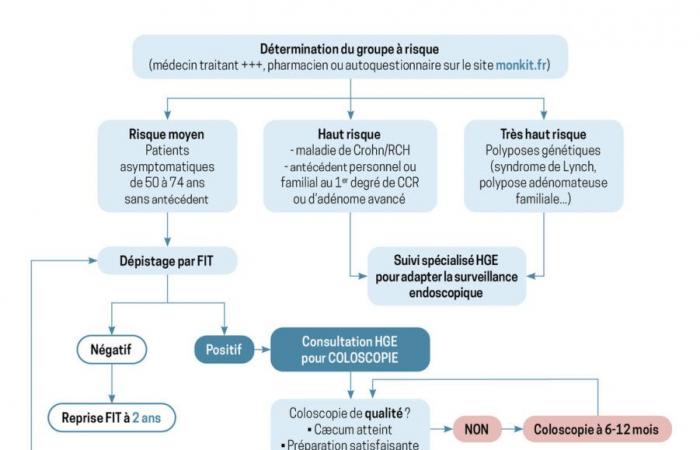The Kaiser Permanente consortium, present in eight North American states, recently offered TIF to patients aged 45 to 49. Thus, the doctors of this organization conducted a retrospective study on a cohort representative of the population to assess the benefit of this earlier screening in their structures.
To do this, they retrospectively followed all their patients aged 45 to 50 from Northern California, Washington State and Colorado having received a kit between January and September 2022 to create a TIF. Patients were excluded from the study if they had IBD, had undergone large or small bowel surgery, had previously performed FIT, or had CRC. The final cohort included 267 732 patients (50.5% women), including 79.9% aged 45 to 49 and 20.1% aged 50.
The main endpoints were the TIF completion rate (within 3 months after its distribution), its positivity, the rate of completion of the colonoscopy (within 3 months of a positive FIT), colonoscopy results and false-positive FIT rate.
These criteria were compared between patients aged 45 – 49 and patients aged 50taking into account several confounding factors (sex, ethnicity, diabetes, smoking, BMI, etc.).
The results were published at the end of October in Annals of Internal Medicine. The rate of completion of the TIF was a little higher among those aged 45 – 49 than among those aged 50 (38.9% vs 37,5 % ; adjusted risk ratio (aRR) = 1,05 ; IC95 % = [1,04 ; 1,06]).
TIF positivity was slightly lower among 45-49 year olds (3,6 % vs
4,0 % ; aRR = 0,91 ; IC95 % = [0,84 ; 0,98]), but the rate of performing a follow-up colonoscopy after a positive FIT was similar between groups. Finally, rates of positive colonoscopy results were similar between the two groups for adenomas with advanced histology and polyps with high-grade dysplasia; the number of adenocarcinomas discovered was identical: 2.7% vs 2,8 %.
However, the rate of false positive TIFs was higher among 45-49 year olds. : 39,9 % vs 31,6 % (aRR = 1,23 ; IC95 % = [1,08 ; 1,40]).
The authors conclude that the similar rates of FIT performance and positive results between 45 – 49 year olds and 50 year olds and over are an argument to justify starting screening from age 45. However, given the low number of cancers found in the study and the significant increase in false positives, the results deserve to be confirmed by a larger cohort.






